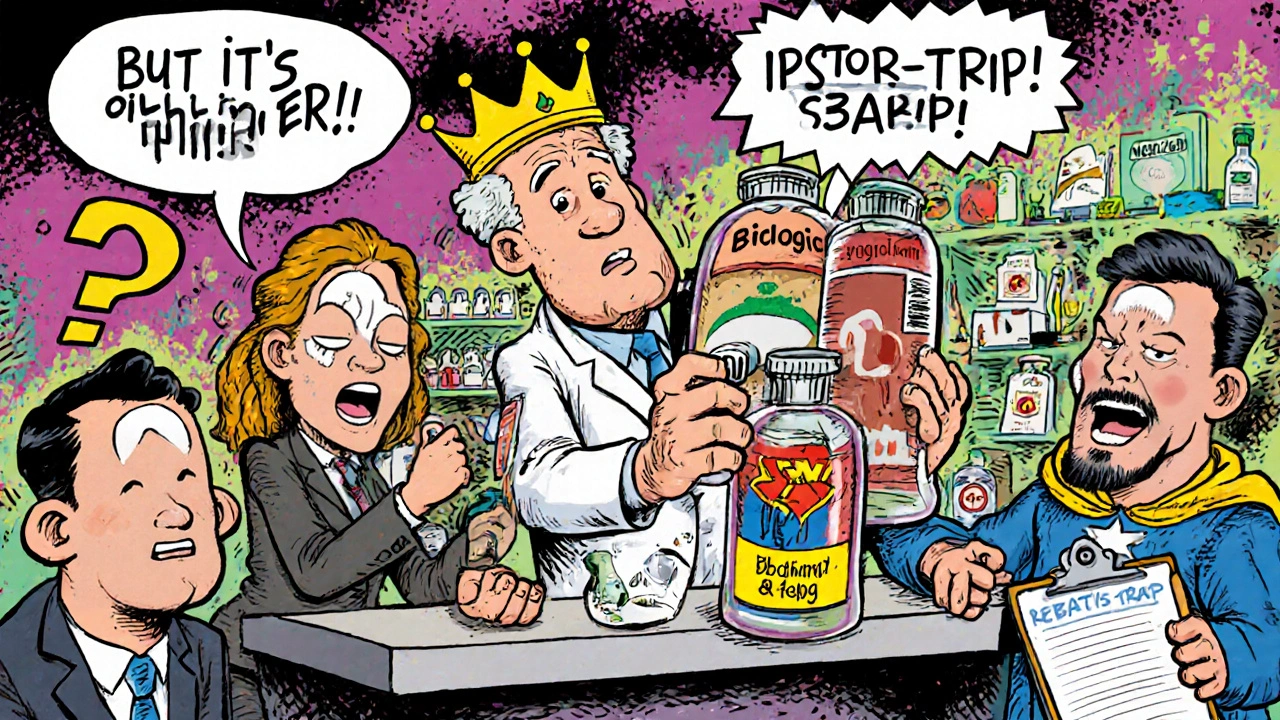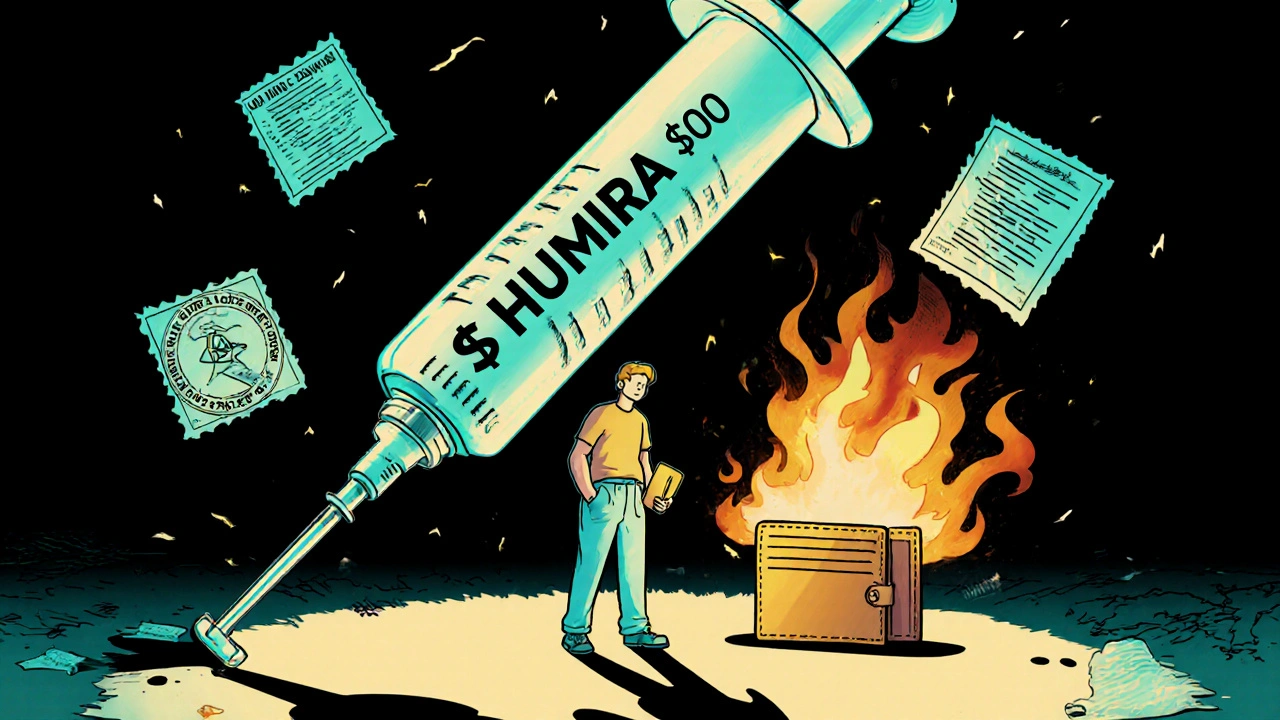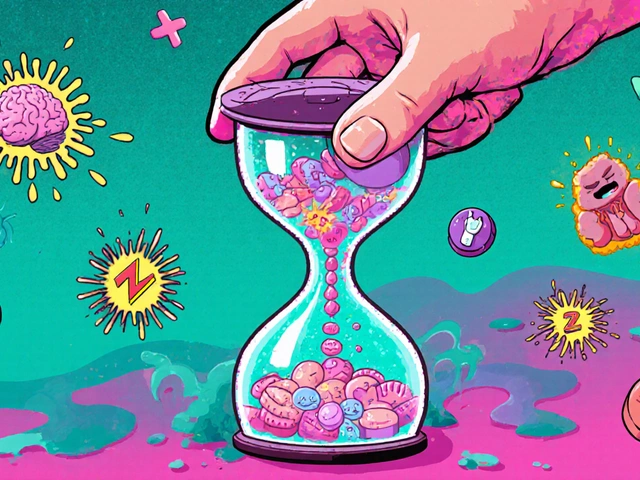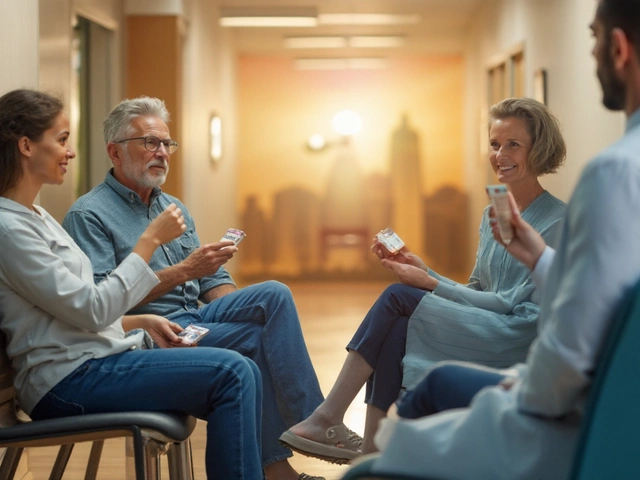Biologic drugs save lives. They treat cancer, rheumatoid arthritis, Crohn’s disease, and other serious conditions. But they also cost thousands of dollars a month. A single dose of Humira can run over $7,000. For many patients, that’s impossible to afford - even with insurance. That’s where biosimilars come in. They’re not generics. They’re not copies. But they’re close enough to work the same way - and save you a lot of money.
What Exactly Are Biosimilars?
Biosimilars are biologic drugs that are highly similar to an already-approved biologic, called the reference product. They aren’t exact copies. You can’t make an exact copy of a drug made from living cells - like yeast or bacteria. Unlike aspirin or metformin, which are made from simple chemicals, biologics are complex molecules grown in living systems. Even tiny changes in temperature, pH, or manufacturing equipment can alter the final product. That’s why biosimilars aren’t called generics. The U.S. Food and Drug Administration (FDA) requires biosimilars to show no clinically meaningful differences in safety, purity, or potency compared to the original. That means: same mechanism of action, same dosage, same route of administration, same side effects. The FDA reviews thousands of data points - from molecular structure to real-world patient outcomes - before approving a biosimilar. As of October 2023, the FDA has approved 45 biosimilars for conditions like cancer, autoimmune diseases, and diabetes.How Are Biosimilars Different From Generics?
Generics are chemically identical to their brand-name counterparts. If you take a generic ibuprofen, you’re getting the exact same molecule as Advil. Biosimilars? Not even close. They’re more like a handcrafted replica of a luxury watch - same function, same precision, but made with different tools and slightly different materials. The manufacturing process is so complex that even the manufacturer can’t make two identical batches of the original biologic. So, biosimilars don’t need to be identical. They just need to perform the same way in the body. This difference matters for regulation. Generics can be swapped at the pharmacy without telling your doctor. Biosimilars? In most states, your doctor must approve the switch. Only six biosimilars in the U.S. have been designated as “interchangeable” by the FDA - meaning a pharmacist can substitute them without consulting your provider. The rest require explicit approval.How Much Do Biosimilars Save?
The big promise of biosimilars is cost savings. But it’s not as simple as “half the price.” When biosimilars first entered the market, they typically offered 15% to 30% savings compared to the reference biologic. That’s far less than the 80%+ discounts generics bring. Why? Because developing a biosimilar costs hundreds of millions of dollars - not just a few million like a generic. Plus, the original drugmaker often fights hard to protect its market with legal tactics, patent extensions, and exclusive deals with insurers. But things are changing. Take Humira, the best-selling drug in the world. When its first biosimilars launched in early 2023, they priced at about 35% lower than Humira’s $7,000 monthly list price. One, Hyrimoz, became the first interchangeable biosimilar for Humira in July 2023, priced at $5,054 per month - a 28% discount. That’s real savings. In Europe, where biosimilars have been around since 2006, savings are much higher. In countries like Germany and Sweden, biosimilars now make up over 80% of the market for drugs like filgrastim. In the U.S., adoption varies. For infliximab (Remicade), biosimilars captured 72% of new prescriptions within 18 months. For etanercept (Enbrel), it’s only 28%. Why the gap? Patent battles and payer restrictions slowed things down. The Congressional Budget Office estimates biosimilars could save the U.S. healthcare system $150 billion annually by 2030 - if market barriers are removed. The Inflation Reduction Act of 2022 helped by capping Medicare Part D cost-sharing for biosimilars at 25% starting in 2024. That means less out-of-pocket cost for seniors on these drugs.
Are Biosimilars Safe?
This is the number one concern patients have. “Will it work the same? Will it cause more side effects?” The answer, backed by decades of global data, is yes. The European Medicines Agency has tracked biosimilars for 16 years. No unexpected safety issues have emerged. The NOR-SWITCH trial, published in The Lancet, followed over 500 patients with autoimmune diseases who switched from the original biologic to a biosimilar. After 52 weeks, there was no increase in side effects or loss of effectiveness. The Arthritis Foundation surveyed 1,200 patients using biosimilars. 87% said they noticed no difference in how well the drug worked. 72% reported lower out-of-pocket costs. The few negative reviews on sites like Drugs.com didn’t complain about effectiveness - they complained about insurance denials or confusion over switching. One exception: immunogenicity - the risk that your body might react to the drug as a foreign substance. All biologics carry this risk. But studies show biosimilars don’t increase it. In fact, many patients who switched from the reference product to a biosimilar had fewer immune reactions, likely because they were on a more consistent product over time. Dr. Gary Lyman, a cancer specialist at Fred Hutchinson Cancer Research Center, put it plainly: “Biosimilars have demonstrated equivalent efficacy and safety across thousands of patients.” The FDA says the same: “Biosimilars are as safe and effective as their reference products.”Why Isn’t Everyone Using Them?
If they’re safe and cheaper, why aren’t biosimilars everywhere? Three big reasons:- Patent thickets. Original drugmakers file dozens of minor patents to delay competition. They’ll tweak a delivery device or packaging and claim it’s “new.” This pushes back biosimilar entry by years.
- Payer resistance. Insurance companies and pharmacy benefit managers (PBMs) sometimes prefer the original drug because they get rebates from the manufacturer. Those rebates don’t always go to the patient - they go to the middlemen. So even if a biosimilar is cheaper, your plan might not cover it unless you jump through hoops.
- Provider and patient hesitation. Many doctors weren’t trained on biosimilars. A 2022 survey found 78% of oncologists needed 1-2 hours of education to feel confident prescribing them. Patients, too, are wary. A Reddit thread in r/rheumatology showed patients scared to switch - even when their doctor recommended it. One rheumatologist wrote: “I spend 10-15 minutes per patient explaining the science. It’s not about the drug. It’s about trust.”
How to Get Started With Biosimilars
If you’re on a biologic right now - or about to start one - here’s what to do:- Ask your doctor: “Is there a biosimilar available for my drug?” If you’re on Humira, Enbrel, Remicade, or Rituxan, there likely is.
- Check your insurance: Call your insurer or log into your portal. Look up your drug by name. See if a biosimilar is covered - and at what tier. Sometimes the biosimilar is in a lower cost-sharing tier.
- Ask about interchangeability: If your drug is listed as “interchangeable,” your pharmacist can switch you without calling your doctor. If not, your doctor must write a new prescription.
- Use official resources: The FDA’s Purple Book lists every approved biosimilar and its reference product. The Biosimilars Council has free patient guides by disease. The Alliance for Patient Access offers provider training materials you can print and bring to your appointment.
- Don’t assume cost: List price isn’t what you pay. A biosimilar might be cheaper on paper, but if your insurance doesn’t cover it, you’re stuck with the original. Always ask for a price quote before filling the prescription.
What’s Next for Biosimilars?
The pipeline is full. Seven biosimilars for Stelara (ustekinumab) are under FDA review. More are coming for Keytruda, Opdivo, and other high-cost cancer drugs. By 2027, experts predict biosimilar adoption will rise from 25-30% to 50-60% for most products. The next wave includes “biobetters” - improved versions of biologics with longer-lasting effects or fewer injections. These aren’t biosimilars. They’re next-gen drugs. But they’ll still push prices down. In the U.S., the real challenge isn’t science. It’s policy. Until patent abuse is curbed and rebate systems are reformed, savings will stay limited. In Europe, where governments negotiate prices directly, biosimilars took off fast. In the U.S., the system is broken - but it’s not hopeless.Final Thoughts
Biosimilars aren’t magic. They’re science - and they’re working. They’re safer than many people think. They’re cheaper than the originals. And they’re here to stay. If you’re paying thousands a month for a biologic, ask your doctor about alternatives. You might not need to pay that much. The science is solid. The data is clear. The only thing left to overcome is fear - and bureaucracy.Are biosimilars as safe as the original biologic drugs?
Yes. The FDA and European Medicines Agency require extensive testing to prove biosimilars have no clinically meaningful differences in safety, purity, or effectiveness. Over 16 years of global use, including studies like the NOR-SWITCH trial, have shown no increased risk of side effects or loss of effectiveness compared to the original biologic. Thousands of patients have switched without issues.
Why are biosimilars cheaper than the original biologics?
Biosimilars don’t need to repeat all the expensive clinical trials the original drug did. The manufacturer only needs to prove similarity through analytical, non-clinical, and targeted clinical studies. This cuts development costs significantly - from over $1 billion for a new biologic to around $100-$200 million for a biosimilar. Savings are passed on, though not always fully - due to market practices like rebates and patent protections.
Can my pharmacist switch me to a biosimilar without telling me?
Only if the biosimilar is designated as “interchangeable” by the FDA - and only in states that allow pharmacist substitution. As of 2023, only six biosimilars in the U.S. have this status. In most cases, your doctor must approve the switch. Even in states that allow substitution, many pharmacists still notify the prescriber as a precaution. Always check your prescription and ask if a change was made.
Do biosimilars work for all conditions that biologics treat?
No - not yet. Biosimilars are currently approved for specific conditions that the reference biologic treats, such as rheumatoid arthritis, Crohn’s disease, certain cancers, and diabetes. Each biosimilar must be approved for each use separately. For example, a biosimilar for Humira may be approved for rheumatoid arthritis but not psoriasis unless tested and approved for that use. Always check the approved indications on the FDA’s Purple Book or your provider’s guidance.
Will switching to a biosimilar affect my insurance coverage?
It often helps. Many insurers now prefer biosimilars because they’re cheaper. Some even require you to switch before covering the original biologic. But some plans still favor the brand-name drug due to rebates. Always check your plan’s formulary. If your insurer denies coverage for a biosimilar, ask for a prior authorization or appeal - many patients succeed by citing FDA approval and clinical guidelines.






